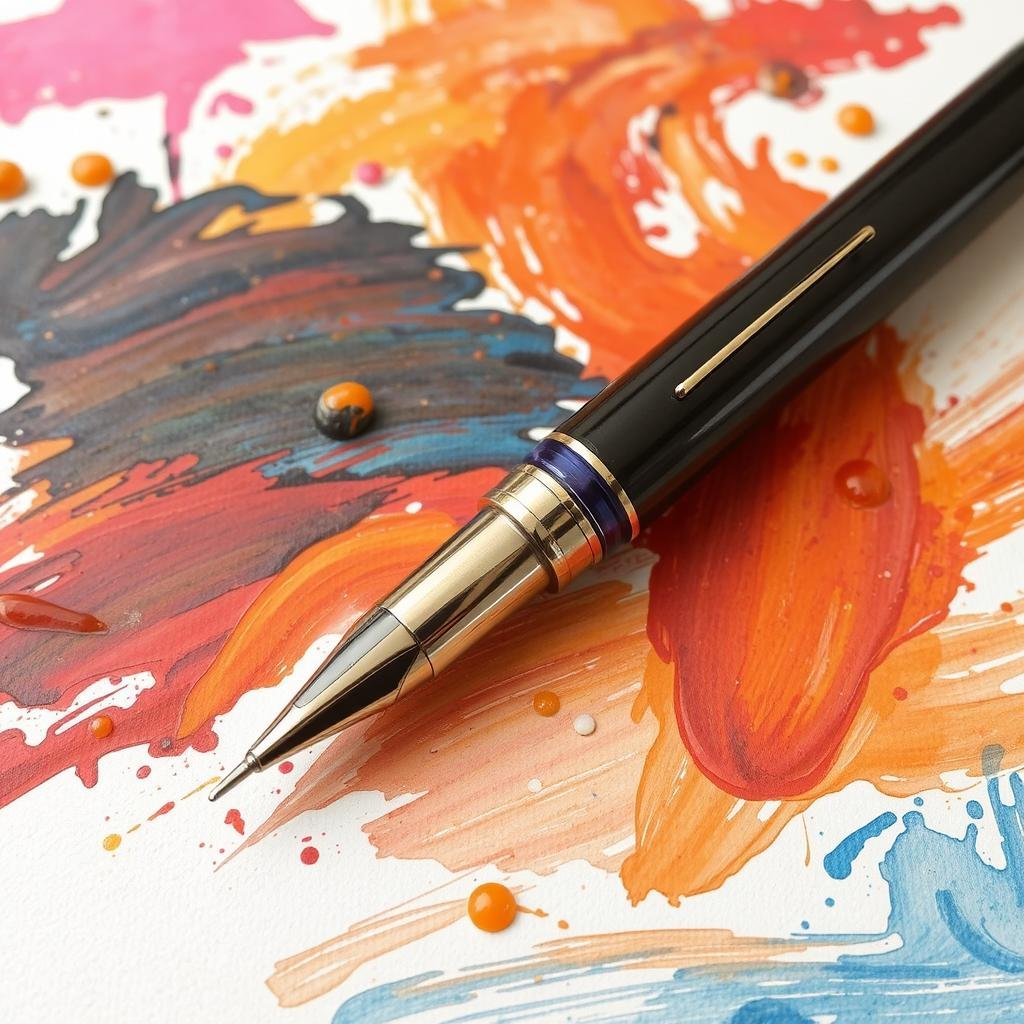
Writing on painted surfaces presents unique challenges, as different paint types affect ink adhesion, smudging, and durability. A fountain pen, while known for smooth writing, requires specific considerations when used on painted surfaces. This guide explores the properties of painted surfaces, challenges of writing on them, and the best fountain pens suited for such tasks.

Fountain Best Pen for Writing on Paint
1. Properties of Painted Surfaces
1.1. Composition of Painted Surfaces
A painted surface consists of multiple layers that influence ink performance:
- Base Material (Substrate): Wood, metal, plastic, or walls.
- Primer (If Used): Enhances adhesion for the paint and influences ink absorption.
- Paint Layer: Affects texture, porosity, and ink compatibility.
- Topcoat or Sealant (If Applied): Can create a glossy, smooth barrier that resists ink.
1.2. Surface Texture and Paint Finish
The paint finish determines how well a fountain pen ink adheres to the surface:
| Paint Finish | Surface Properties | Writing Challenges |
|---|---|---|
| Glossy | Smooth, non-porous, reflective | Ink beads up, smudges easily |
| Semi-Gloss | Slightly porous, moderate sheen | Some adhesion, but still prone to smudging |
| Satin | Soft sheen, mildly porous | Ink absorption improves, but drying time varies |
| Matte | Non-reflective, porous | Best for writing, absorbs ink better |
| Chalky/Flat | Rough texture, highly porous | Ink absorption is high, but may bleed |
Fountain pen ink behaves differently on each surface, making it essential to choose the right ink and writing technique.

Fountain Best Pen for Writing on Paint
2. Challenges of Writing on Painted Surfaces
2.1. Ink Adhesion Issues
- Water-based fountain pen inks may not adhere to glossy or sealed surfaces.
- Oil-based paints can repel certain inks, causing beading or smudging.
2.2. Drying Time and Smudging
- Non-porous painted surfaces slow down ink drying.
- Some fountain pen inks may remain wet for too long, leading to smudging.
2.3. Durability of Writing
- Ink may fade quickly on highly porous or sealed surfaces.
- Paint sealants can dissolve or erase water-based fountain pen inks.
2.4. Surface Preparation Challenges
- Uneven or dirty surfaces cause ink to spread irregularly.
- A topcoat or a glossy finish can prevent ink from settling properly.
3. Choosing the Right Fountain Pen for Writing on Paint
The best fountain pens for writing on paint should have durable nibs, smooth ink flow, and work well with pigmented or waterproof inks.

Fountain Best Pen for Writing on Paint
3.1. Recommended Fountain Pens
| Fountain Pen | Best For | Challenges |
|---|---|---|
| Pilot Parallel Pen | Writing on matte and semi-gloss surfaces | Ink smudging on glossy paint |
| Lamy Safari | Versatile, works on lightly textured paint | Requires waterproof ink for durability |
| Platinum Preppy | Affordable, good for testing on different paints | May need ink refills frequently |
| TWSBI Eco | Ideal for permanent inks and rough textures | Requires proper cleaning to prevent clogging |
| Parker 51 | Classic design, smooth ink flow on painted surfaces | Works best on semi-porous paint |
These fountain pens, when paired with the right ink, can improve writing results on painted surfaces.
4. Best Ink Options for Painted Surfaces
Choosing the right ink is crucial for long-lasting, smudge-free writing on paint.
4.1. Waterproof vs. Non-Waterproof Inks
| Ink Type | Best for | Challenges |
|---|---|---|
| Pigmented Ink | Works well on matte and porous surfaces | May clog fine nibs |
| Iron Gall Ink | Adheres better on semi-gloss surfaces | Can corrode pen nibs over time |
| Acrylic Ink | Waterproof and long-lasting | May require dip pens instead of fountain pens |
| Water-Based Ink | Ideal for testing and non-permanent writing | Smudges on glossy surfaces |
4.2. Recommended Inks
- Noodler’s Bulletproof Ink: Waterproof and resistant to fading.
- Platinum Carbon Ink: Permanent ink, suitable for painted surfaces.
- De Atramentis Document Ink: Fast-drying and smudge-resistant.
- Rohrer & Klingner SketchInk: Pigmented ink for longer-lasting results.

Fountain Best Pen for Writing on Paint
Using the right ink can significantly improve writing quality on painted surfaces.
5. Tips for Writing on Painted Surfaces with a Fountain Pen
5.1. Surface Preparation
- For Glossy Surfaces: Lightly sand or roughen the surface before writing.
- For Matte or Chalky Paint: Ensure the surface is free from dust or grease.
- For Sealed Surfaces: Test the ink on a small area before writing.
5.2. Writing Technique
- Use a Fine or Medium Nib: Helps control ink flow and prevents excess smudging.
- Apply Even Pressure: Avoid pressing too hard, as the ink may spread unevenly.
- Write Slowly: Allows ink to settle better on the surface.
5.3. Protecting the Writing
- Apply a Clear Fixative: Spray a sealant over the writing to prevent fading.
- Use Heat-Setting Techniques: Gently heat the surface to help the ink bond better.
6. Alternative Writing Tools for Painted Surfaces

Fountain Best Pen for Writing on Paint
While fountain pens can work on certain painted surfaces, alternative tools may provide better results.
| Writing Tool | Advantages | Challenges |
|---|---|---|
| Paint Markers | Permanent, works on all surfaces | Requires shaking before use |
| Gel Pens | Smooth writing, good for semi-gloss surfaces | Not waterproof |
| Chalk Markers | Temporary, ideal for matte paint | Erases easily |
| Brush Pens | Great for artistic writing on paint | Can be messy on glossy paint |
Each tool has its advantages depending on the surface and intended use.
Conclusion
Selecting the fountain best pen for writing on paint depends on the paint finish, ink type, and writing technique. Matte surfaces allow better ink absorption, while glossy finishes require waterproof or pigmented ink for durability. Proper preparation and post-writing protection can ensure long-lasting and legible writing on painted surfaces.